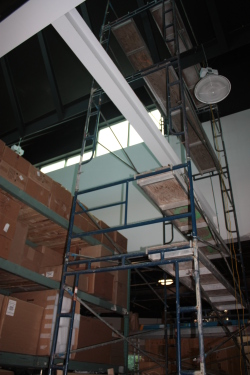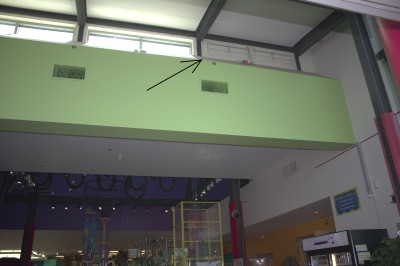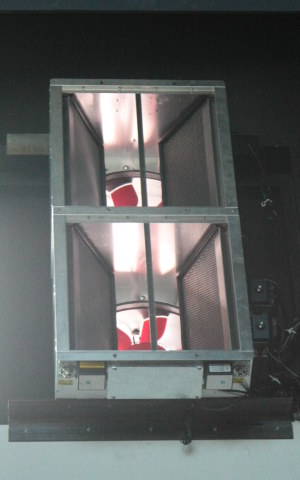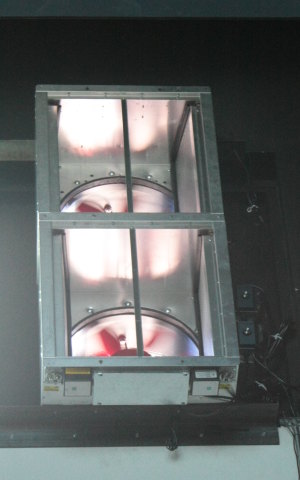The Plan
The goal of this project was to apply the energy saving concept of a residential whole house fan to an institution. Our local museum Science Works was a great candidate for this “experiment”. Everybody wants to reduce energy use these days and who better to show off some of the newest (and oldest) concepts than a science museum?
The Science Works building is a very robust concrete structure. That fact alone got us excited about putting whole house fans into the museum because we know that concrete has a large capacity for storing “cool”. We also know that summers in Ashland are plenty hot with a large diurnal temperature variation (big words for “it gets cold at night” ). And of course, what better way to cool the museum than with a couple of our whole house fans.

The Install
Since the fans would only run at night, and nobody spends the night here, we modified our 4.5WHF units to push a little more air. Basically we removed the noise attenuating ductwork. The plan was to use a pair of the fans, which will exhaust 10,000 CFM (cubic feet per minute) from the building. By using our 4.5WHF units , we made it easy for the contractor to provide well insulated (R-10) and sealed damper doors. A typical commercial project would involve ordering custom dampers and fans and probably many decision makers.
A clerestory window over a warehouse area of the museum was selected as the logical location because of its height (remove all that hotter air) and relative ease in waterproofing (no roofing work!). A scaffold was built and a local contractor (all organized by Science Works director Mark Dirienzo) installed the units.
So, we solved the problem of getting the air out, but what about letting fresh air in. It’s not practical to leave windows open all night, but whoever designed the museum must have been thinking ahead. We found 2 sets of dampers high up above the entry way.

Better yet, motorized actuators were found to be in working order. The plan is to setup an automatic timer that opens up the dampers and turns on the fans every night at 10:00 PM. The weather is predictable enough here that we don’t need anything more complicated.
Operation
Last night, we opened up the intake dampers and turned on the fans. No hard numbers yet, but we got the main entryway down to 67°, which is way better than the usual 78°. We’ll report back on the results as we gather data on temperatures and energy use.


Technical Data
- 10,000 CFM with outside air 10° cooler than inside
- This yields about 9 tons of cooling.
- We expect to be able to run the fans for 10 hours per night based on historical weather data.
- We estimate a savings of 20% of the museum’s cooling energy.
